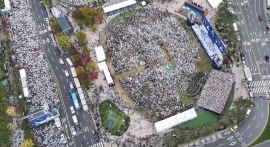
The European Space Agency announced that the Philae probe of their Rosetta mission has successfully landed on the surface of 67P comet on Wednesday.
Before the Philae Lander detached from the Rosetta spacecraft, ESA experienced technical problems, but they eventually decided to push through with the detachment from the mother craft.
And after seven hours, Philae Lander manager Stephen Ulamec confirmed at 11:03 a.m. EST that the probe is already sitting on the surface of the comet.
ESA lander system engineer Laurence O'Rourke also confirmed the landing, while also adding that they are still waiting for data that will be sent back to earth by the Philae Lander, which was launched to space more than a decade ago.
The Philae Lander is expected to get sample materials from the comet as early as Thursday barring any major setback. The mission aims to get more information about the composition of comets and how it will behave once it gets closer to the sun.
"We are extremely happy," O'Rourke told CNN. "To get the signal it had touched the surface was a major achievement. It was quite extraordinary. Philae is already taking measurements, sniffing the comet. We are just waiting for data."
However, ESA also announced that their engineers also found out that the anchors of the probe failed to work properly. ESA engineers fear that the Philae Lander is not attached properly on the surface, which means that it could bounce back to space anytime.
"Our big concern is at the moment is whether we are standing stably. We are considering if we need to retry shooting the anchors." an ESA spokesman told The Telegraph.
But despite the technical difficulties before and after the landing, NASA chief scientist, Ellen Stofan, told CNN that the Rosetta mission is a huge success.
"Philae was such a huge success before it even did anything, so kudos to ESA and the scientific community," Stofan said. "No one has ever gotten data like Rosetta has gotten. No one has ever been able to land on a comet the way Philae just did."



















